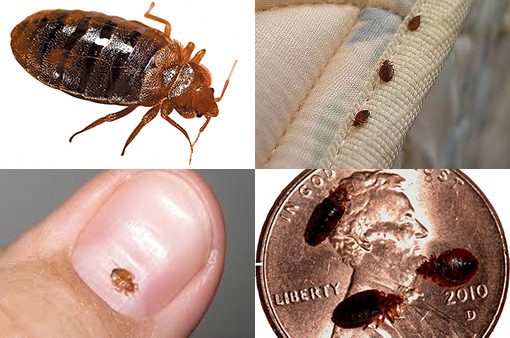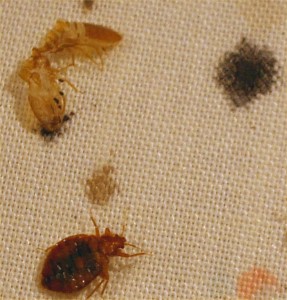Top-Rated Bed Bug Exterminator: DC Exterminator for Effective Treatment
Exploring the Scientific Research Behind Bed Bug Warmth Treatments as a Sustainable Pest Management Method
One such approach that has obtained grip in recent years is the usage of warm treatments to combat bed bug infestations. The ins and outs of just how warmth effectively gets rid of bed pests and the more comprehensive implications for sustainable insect administration techniques make this a topic worth checking out better.
Bed Bug Warm Therapy Refine

Thermal Death Point for Bed Insects
Subjecting bed pests to raised temperature levels past their thermal resistance variety is crucial for attaining efficient obliteration in warm therapy processes. The thermal fatality point for bed bugs refers to the temperature at which these parasites can not make it through. Study suggests that bed pests start to die when exposed to temperatures over 113 ° F(45 ° C) for a sustained duration. As the temperature level raises, so does the mortality rate of bed insects. At around 118 ° F(48 ° C ), bed insects begin to pass away rapidly, with a death rate of almost 99% within mins of direct exposure. This shows the level of sensitivity of bed bugs to heats and highlights the performance of warmth treatments in eradicating infestations. By getting to and preserving temperatures over the thermal death point for bed bugs, insect monitoring experts can make sure comprehensive elimination of bed insect populations, including hard-to-reach areas where chemical therapies may be less efficient. Recognizing the thermal fatality point for bed pests is essential for applying effective warmth treatment methods and accomplishing sustainable bug administration end results.
Benefits of Warmth Treatments
Having established the critical thermal death point for bed pests, it is imperative to now discover the substantial benefits that warmth therapies use in successfully removing these durable pests. When compared to traditional chemical methods, heat therapies present several vital advantages. One of the primary benefits is that heat can permeate deep into fractures and crevices where bed insects hide, making sure that also the most hard-to-reach locations are heated to dangerous temperatures. This thorough technique not only eliminates live pests however also targets bed pest eggs, avoiding future problems.
Additionally, heat treatments are environmentally friendly and non-toxic, making them a lasting parasite management method. Unlike chemical pesticides, warmth treatments do not leave unsafe residues that can position dangers to human health or the environment. This element is specifically essential in sensitive settings such as healthcare facilities, schools, and suburbs where chemical use might not be desirable.
Furthermore, warm treatments have a high success price in getting rid of bed pest invasions in a solitary treatment, lowering the requirement for multiple sees and decreasing disruption to residents. This effectiveness not just saves time and cash but likewise gives satisfaction to those handling bed bug problems.
Efficiency of Warmth Treatment

Research study research studies have actually continually shown the performance of warmth therapies in attaining a pop over to this web-site high price of bed bug mortality. Appropriately performed heat treatments can reach all the splits and holes where bed bugs may be harboring, guaranteeing a detailed technique to elimination. Warmth therapies have the included advantage of killing bed insect eggs, which are often immune to traditional chemical treatments. Overall, the performance of warm therapies in eliminating bed bug infestations makes them a lasting and dependable parasite administration approach.
Sustainable Parasite Management Conveniences
Implementing sustainable insect monitoring practices provides lasting benefits for both the environment and public health and wellness. By using techniques such as warm therapies for parasite control, we can lower the dependence on harmful chemical pesticides that can have unfavorable impacts on ecosystems and human health - bed bug treatment. Lasting parasite monitoring techniques assist in protecting biodiversity by targeting certain insects without harming non-target organisms, consequently keeping a balanced environment
Moreover, sustainable parasite monitoring techniques add to the total health and health of browse this site the public. By decreasing exposure to toxic chemicals utilized in traditional bug control methods, warmth therapies provide a much safer alternative for parasite administration in household, industrial, and public spaces. This reduction in chemical usage additionally assists in stopping pesticide deposits from infecting soil, water, and air, protecting environmental top quality.
Conclusion
Finally, bed insect warm treatments have actually been shown to be a lasting and efficient bug administration technique. The thermal fatality factor for bed bugs makes them at risk to heat therapies, which have numerous advantages over typical chemical treatments. The efficiency of heat treatments in getting rid of bed pest infestations while decreasing environmental effect highlights the possibility of this approach as a sustainable service for insect control.
The bed insect warmth therapy procedure entails raising the temperature within infested areas to a level that successfully removes bed pests and their eggs. By reaching and preserving temperature levels over the thermal fatality factor for bed bugs, bug monitoring professionals can make certain comprehensive removal of bed pest populaces, consisting of hard-to-reach locations where chemical therapies may be less efficient. One of the go main advantages is that warm can permeate deep right into splits and holes where bed pests hide, making certain that also the most hard-to-reach locations are heated to deadly temperature levels. Unlike chemical therapies that might leave behind immune populations, warm therapies supply a eco pleasant and safe service that can penetrate deep into furnishings, wall surfaces, and various other hard-to-reach locations where bed insects conceal.
The thermal death point for bed bugs makes them susceptible to heat treatments, which have various advantages over standard chemical treatments.